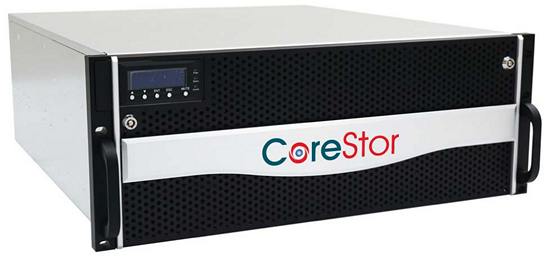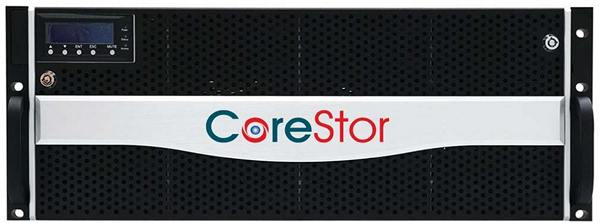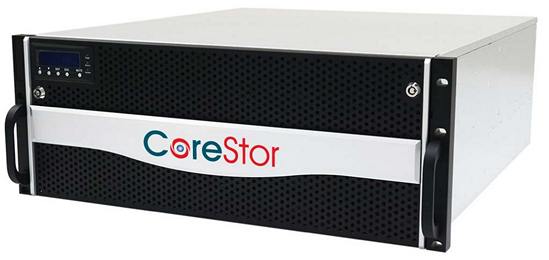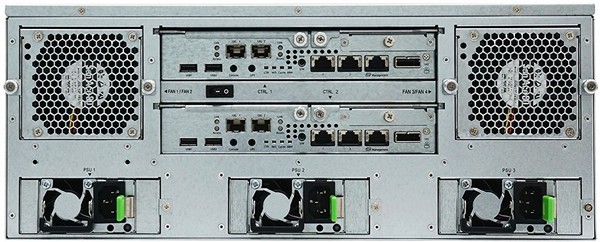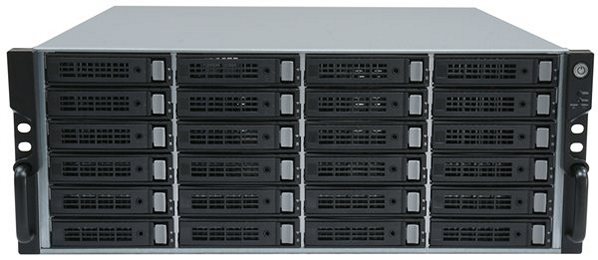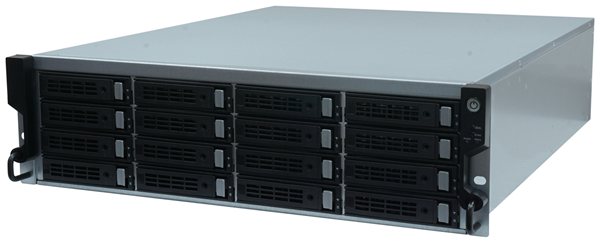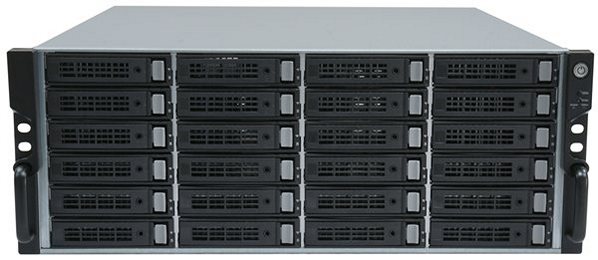Description
CoreStor High Availability NAS is a unified storage system which presents block and file storage services simultaneously out of a single platform. It offers the flexibility of choice, providing CIFS/SMB, AFP, and NFS for file storage and iSCSI for block storage. Every common operating system, hypervisor, and application is supported, providing the benefits of enterprise-grade SAN/NAS capabilities – such as high availability, unlimited snapshots and deduplication
True Active-Active Dual Controller NAS
- Fast failover – inter-process communication and heartbeat is achieved using high speed bus on backplane protected by the enclosure.
- Efficiency – supports all RAID levels in the storage pool. Supports global namespace. Both controllers see the same HDD configuration and storage pool.
- Performance scaling – both controllers can deliver I/O and services at the same time. IOPS can scale 1.5 times.
- Consistent data after recovery – after recovery from controller failure, all disk data remain intact and consistent.
- Cache mirroring through high speed bus (64Gb/s) on backplane board.
- Responsive failover time.
- Easy management to scale performance and capacity.
- No quorum disk is needed.
- More economic than commodity cluster servers.
ALUA Support
ALUA (Asymmetric Logic Unit Access) is supported to provide active-active controller mode. Command shipping and data shipping functions are implemented by proprietary technology to enable higher fault tolerance and better performance.
Redundant and Fault Tolerant Design
No single point of failure. RAID controller, fan module, and power supply module are redundant and hot swappable for maximum availability and super easy on-site maintenance. All modules are connected to the backplane circuit board to achieve the most reliable signal transmission and the best aerodynamic thermal efficiency.
Fast Failover
Heartbeat signal and inter-process communication data are carried out through cable-less, high-speed bus on backplane board, delivering very responsive failover to keep your mission-critical applications running smoothly. Failover time is less than 60 seconds on average. All data services (SMB, NFS, iSCSI) are protected by controller failover.
Unified Storage and File Sharing with Simple Management
NAS and IP-based iSCSI SAN in one box. Unified storage can help consolidate your IT infrastructure and reduce hardware expenses. SMB, NFS, and iSCSI protocols are supported with fault tolerance capability. CoreStor High Availability NAS can act as your file sharing center for Windows and Linux/Unix clients to exchange files easily through common storage pool that is accessible at either file or block level over existing IP networks.
ZFS and RAID Protection
CoreStor High Availability NAS runs on ZFS file system, which is a transactional, copy-on-write, crash-free file system with 128-bit huge addressing space. ZFS can detect silent data corruption and has self-healing capability guaranteeing end-to-end data integrity.
SSD Caching Support
CoreStor High Availability NAS supports the use of high performance SSD drives as fast full tier of storage. SSD caching can greatly improve random IO performance. You can combine SSD drives and SATA drives as a hybrid storage pool and have a net performance result of a pure SAS storage pool.
Hybrid Storage for Flexibility and Performance
CoreStor High Availability NAS leverages the strengths of SSD drives to combine DRAM, flash, and hard disk drives into a hybrid pool to accelerate random IO performance.
Fail-Safe Networking
File-sharing services (SMB and NFS) are provided through cluster IP, which is composed of mirrored network ports from both RAID controllers, with each cluster IP containing dual network paths, one from each RAID controller. Should any network component (port of network switch, cable, network port on RAID controller) along the path fails, the network packets will be quickly switched to the redundant path.
Enterprise Grade Storage Efficiency
- Thin provisioning allows just-in-time capacity and allocates storage space that does not exist.
- Inline, block-based deduplication helps you remove data redundancy at block level. It’s a must-have feature for file backup, data archive, VDI and mail database applications.
- Compression is lossless and can help save even more storage space.
File Level Snapshots
File-level snapshot helps IT administrator to retrieve a file as easy as browsing through a directory when things like virus attack and accidental deletion or modification happens. You can rollback the snapshot to a certain point in time in the past or clone the snapshot to become an independent folder.
Block Level Snapshots
CoreStor High Availability NAS supports snapshot for block-level storage such as LUN. Using copy-on-write technology, differential data are recorded between two given points in time. You can rollback the snapshot to a certain point in time in the past or clone the snapshot to become an independent LUN.
Remote Replication for Disaster Recovery
CoreStor High Availability NAS supports block-level snapshot-based asynchronous replication. Remote replication task can be created for folders and LUNs. Only differential data at block level will be replicated to achieve maximum efficiency. Replication function is provided by storage array itself. No host server resources are involved and host servers can remain focused on mission-critical applications.
The Perfect Fit for Enterprise IT
CoreStor High Availability NAS integrates with both Windows Active Directory and LDAP allowing IT administrators to easily manage up to 65536 accounts. The support of Windows ACL simplifies privileges setting and provides access control, helping enterprises to manage IT infrastructure more efficiently.
Unified Authentication mechanism for all data services simplifies the account management; leveraging domain authentication (Windows Active Directory, LDAP) to make seamless log-in from any clients by any data service (CIFS, NFS, APF,FTP, iSCSI CHAP, WebDAV, etc.)

